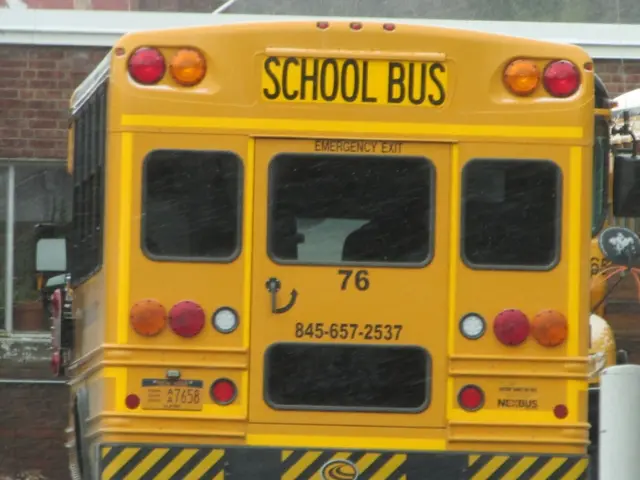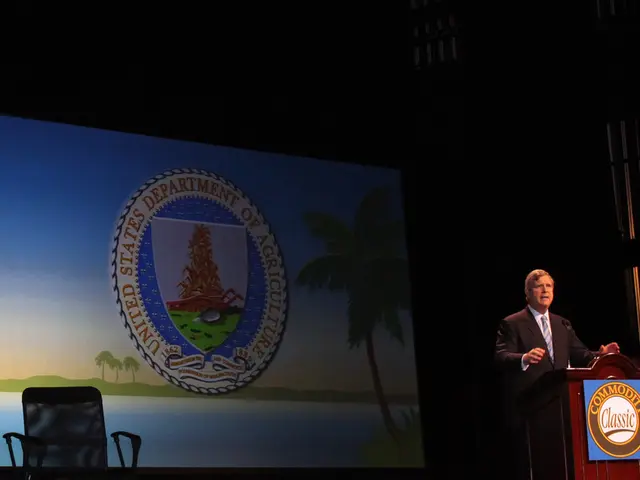STEM Education Facilitates Vocational Prospects in Remote Areas
Diving into STEM Education in Rural America
Embracing Science, Tech, Engineering, and Math
IGNITING PASSIONS, SHAPING FUTURES! The world of STEM (Science, Technology, Engineering, and Math) is a treasure trove of endless opportunities, but it's not just confined to the buzzing cityscape. Rural America is filled with young minds eager to dive into this dynamic realm, and pumping a solid foundation of STEM education into these communities is essential for bridging the opportunity gap.
Unfortunately, access to quality education is not always equal across rural and urban areas. Factors such as limited resources, accumulated challenges, and underfunding compromise the educational experience for far too many students in rural America. Yet, this hardship can't overshadow the longing hearts and inquisitive minds that eagerly await the chance to embrace their STEM dreams.
Confronting the Challenges of STEM Education in Rural America
Falling Behind on Resources
While cities flourish with modern labs, cutting-edge technology, and up-to-date curricula, many rural schools struggle to keep up. The lack of essential resources means that hands-on learning and experimentation are often in short supply.
Another formidable hurdle is broadband connectivity, as rural areas lag behind urban regions in terms of high-speed internet access. Nevertheless, strides have been made in recent years, bringing rural students closer to educational resources previously out of reach.
Funding and Financial Struggles
Rural schools are typically underfunded compared to their urban counterparts. As a result, investments in STEM resources and infrastructure struggle to materialize. Additionally, hard-to-fill teacher positions are a persistent challenge for rural districts, as they face lower salaries and fewer opportunities for professional development.
Seizing the Opportunities
Cutting-Edge Technology and Education
Improvements in broadband access and the rapid advancement of edtech are chipping away at the digital divide, empowering rural students to engage with resources that were once unattainable. Advanced AI tutors and online courses enable these students to excel in the comfort of their homes or even on-the-go.
Embracing Community Collaboration
Programs like the Smithsonian’s STARS initiative bring cutting-edge, hands-on STEM experiences to rural schools. Community collaborations are vital for maximizing resources and ensures a comprehensive, high-quality learning experience for all students.
Nurturing the Green Roots of STEM Education
Environmental Science and Conservation
Rural students often possess a strong connection to the natural world and a genuine interest in preserving their immediate environment. Exploring environmental science can be a powerful way to engage students, foster passions, and secure lasting interests in STEM fields.
Hands-On, Real-World Learning
Rural environments offer ideal settings for environmental science research and experimentation. Collaborating with local organizations and universities enables students to study their own ecosystems and gain valuable hands-on experience in conservation efforts.
Building a Brighter STEM Future in Rural America
Tailored Curriculum Development
Designing STEM curricula that addresses local environmental concerns and the unique challenges faced by rural students makes learning more relevant and engaging.
Community Partnerships
Building and fostering partnerships between schools, businesses, and organizations ensures that students have access to resources and mentorship.
Innovative Funding Models
Investigating private-public partnerships and considering federal initiatives can open doors for funding STEM programs in rural areas.
Together, we can empower rural students to unlock their boundless potential and pave the way for a brighter, more innovative future for rural America. Get involved and help make a difference today! 🚀💡🌍🌿🌱🌹🌿🌱🌼🌺💪💪💪💪💪💪💪💪💪💪💪💪💪💪💪💪💪💪💪💪💪💪💪💪💪💪💪💪💪💪💪💪💪💪💪💪💪💪💪💪💪💪💪💪💪💪💪💪💪💪💪💪💪💪💪💪💪💪🚀🌐🚀🌐🚀🌐🚀🌐🚀🌐🚀🌐🚀🌐🚀🌐🚀🌐🚀🌐🚀🌐🚀🌐🚀🌐🚀🌐🚀🌐🚀🌐🚀🌐🚀🌐🚀🌐🚀🌐🚀🌐🚀🌐🚀🌐🚀🌐🚀🌐🚀🌐🚀🌐🚀🌐🚀🌐🚀🌐🚀🌐🚀🌐🚀🌐🚀🌐🚀🌐🚀🌐🚀🌐🚀🌐🚀🌐🚀🌐
- Rural students, with their strong connection to the natural world, can engage in environmental science, fostering lasting interests in STEM fields.
- Access to quality education in rural America is often compromised due to limited resources and underfunding, hindering the hands-on learning experiences essential for STEM education.
- Community collaborations and programs like the Smithsonian’s STARS initiative provide rural students with cutting-edge, hands-on STEM experiences and resources.
- Embracing education-and-self-development through STEM is crucial for bridging the opportunity gap in rural America and unlocking students' potential.
- Nurturing environmental education and conservation in rural areas not only encourages STEM learning but also addresses local environmental concerns, making learning more relevant.
- To build a brighter STEM future in rural America, it's important to consider innovative funding models, such as private-public partnerships and federal initiatives, while fostering community partnerships and developing tailored curricula.








